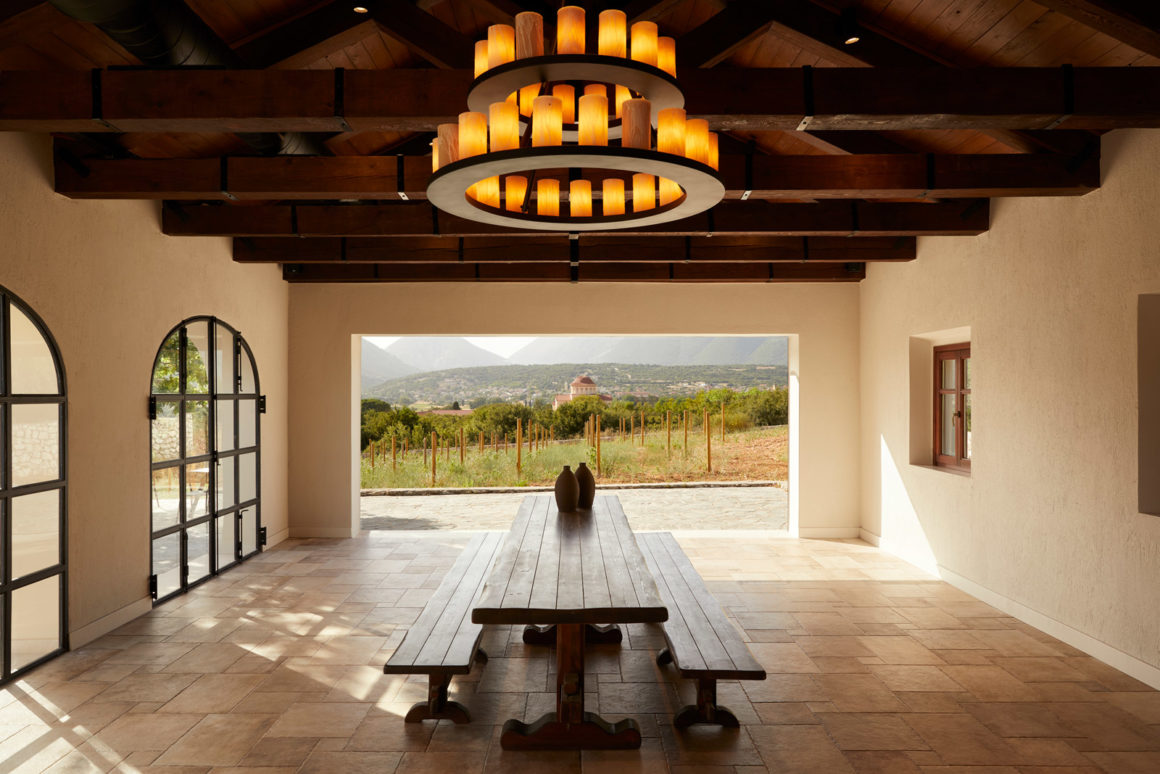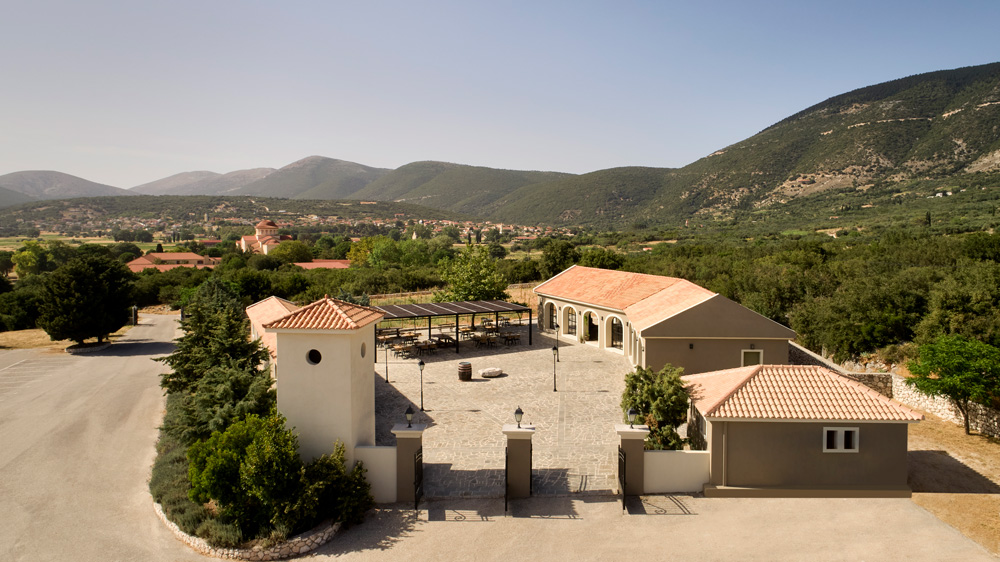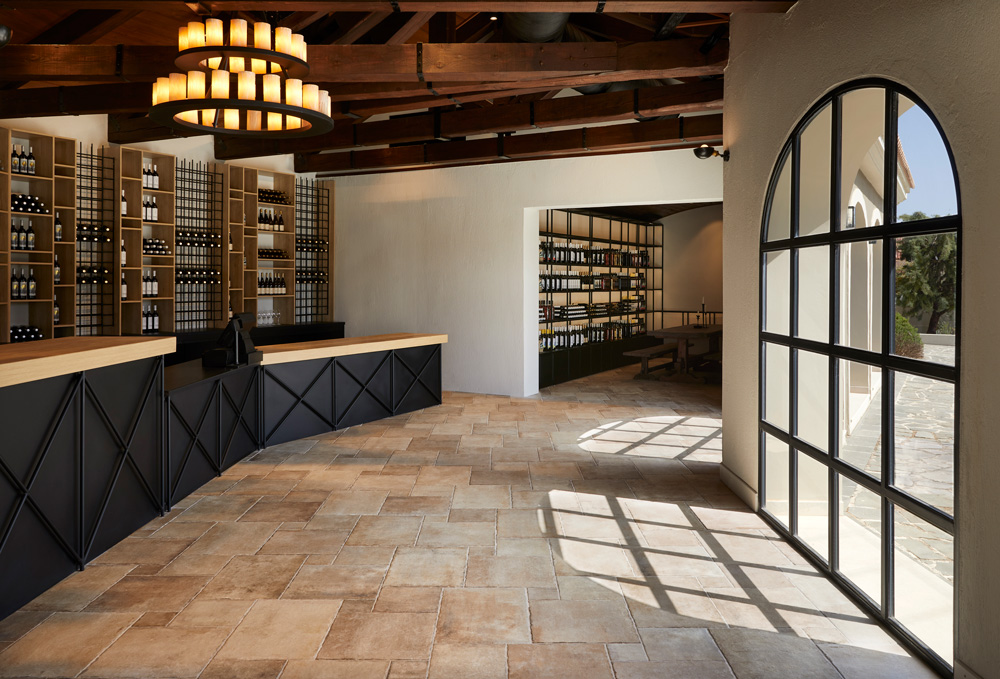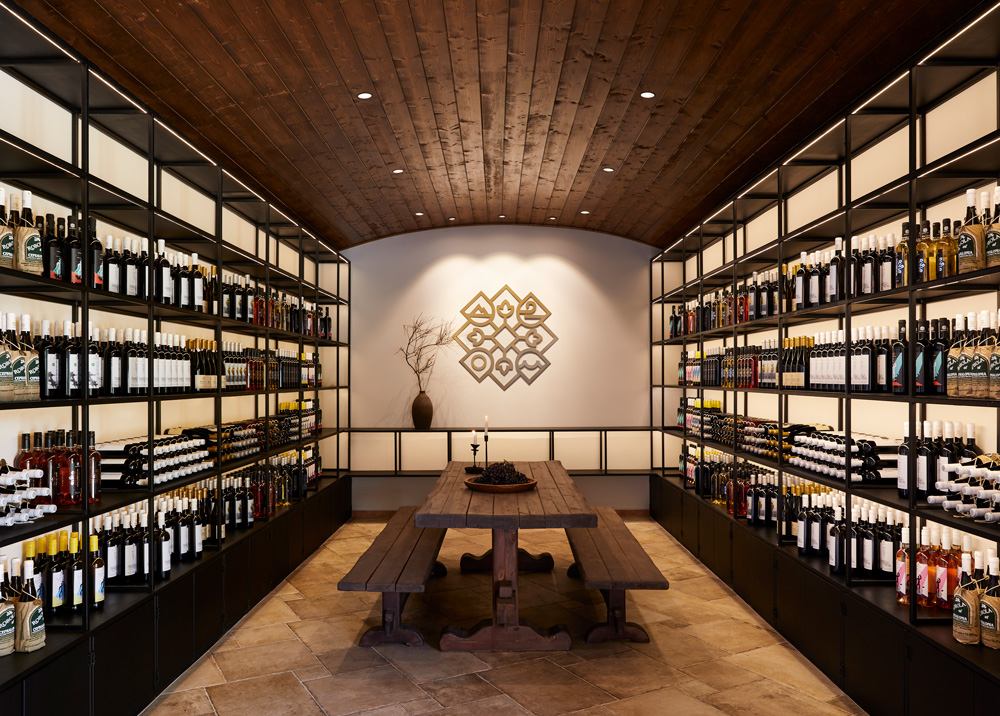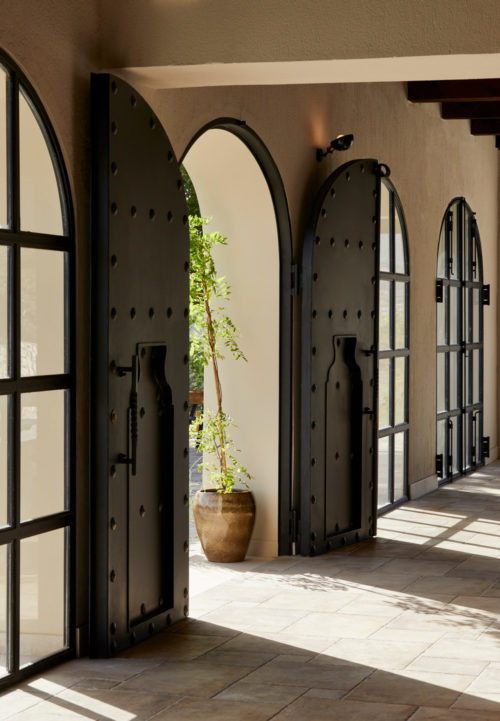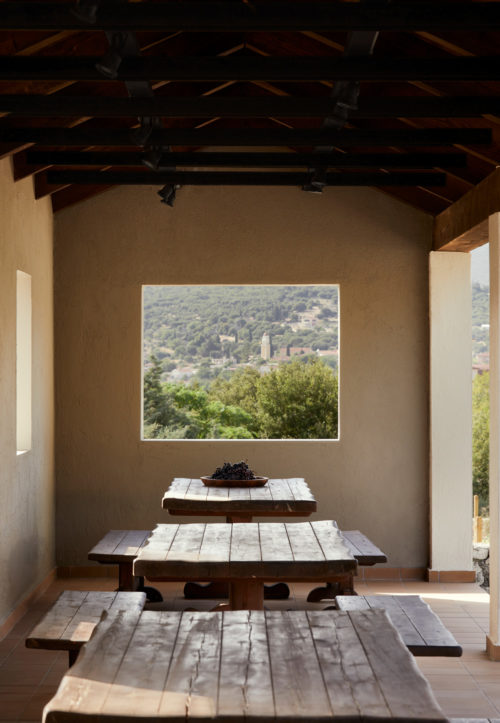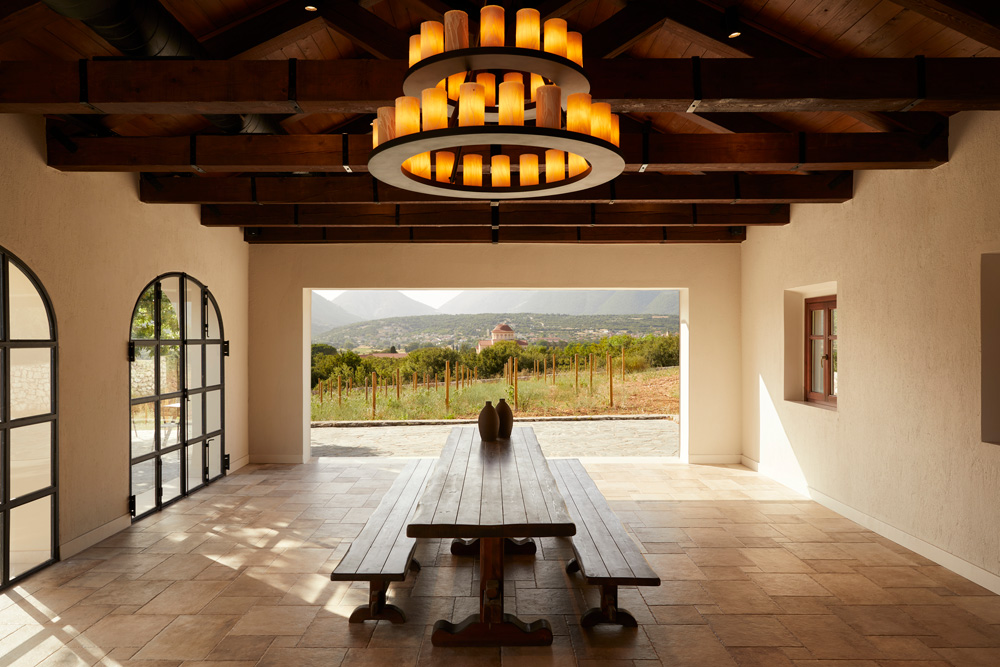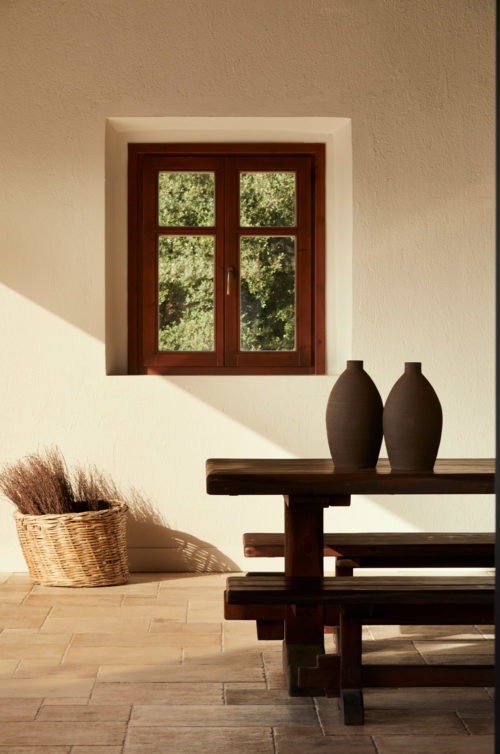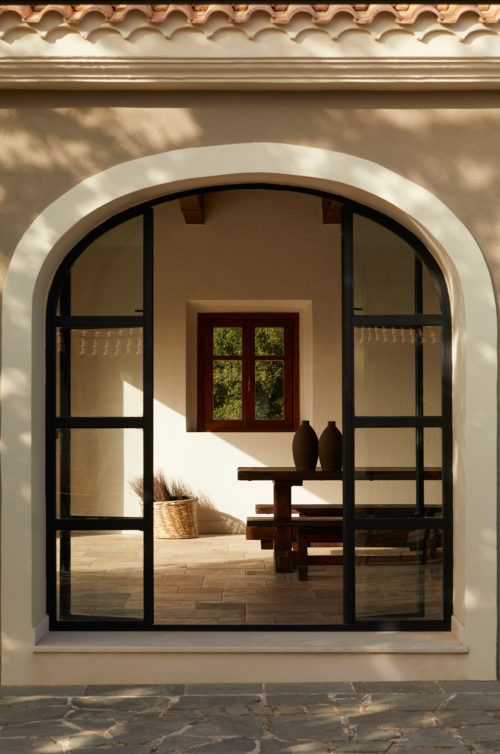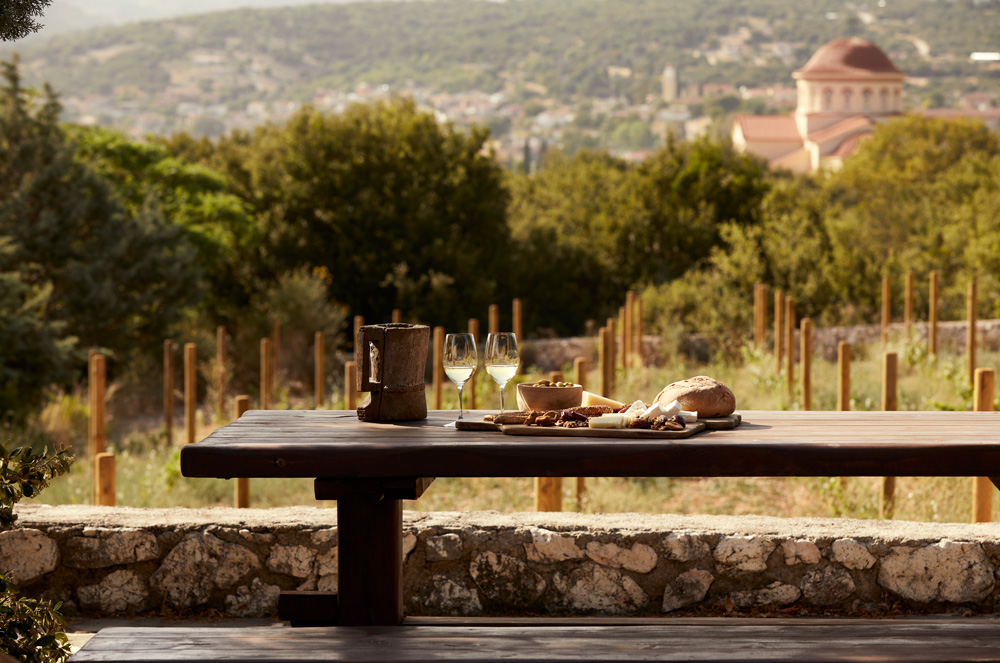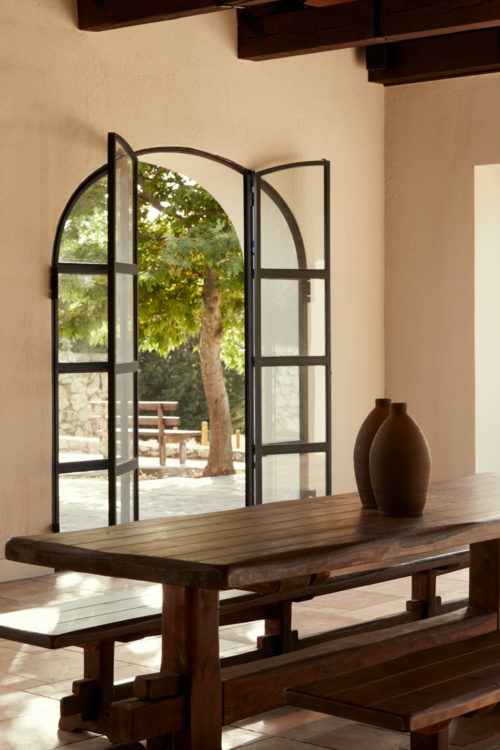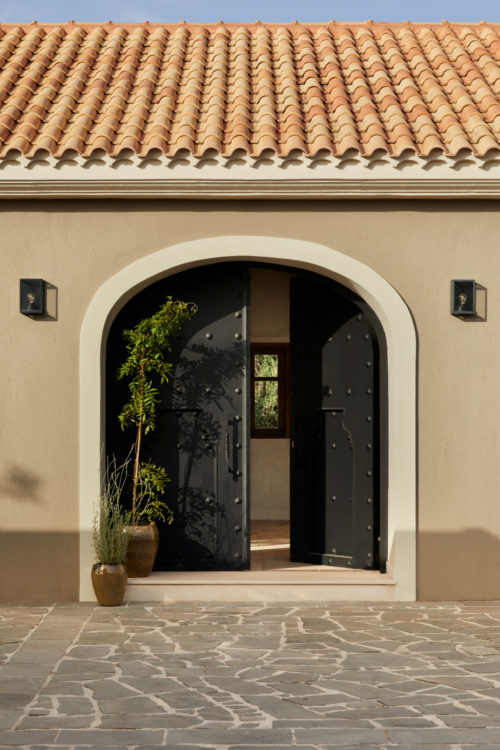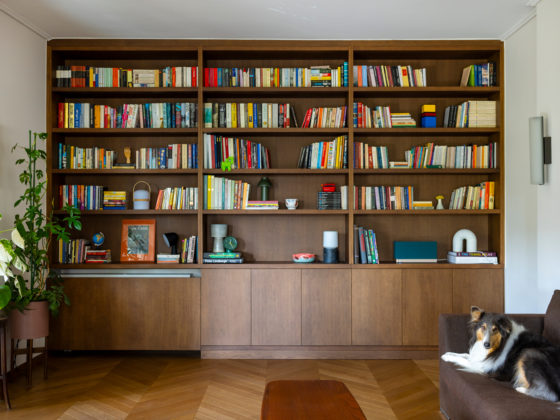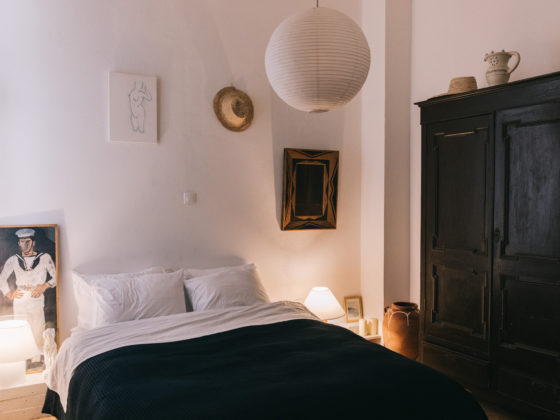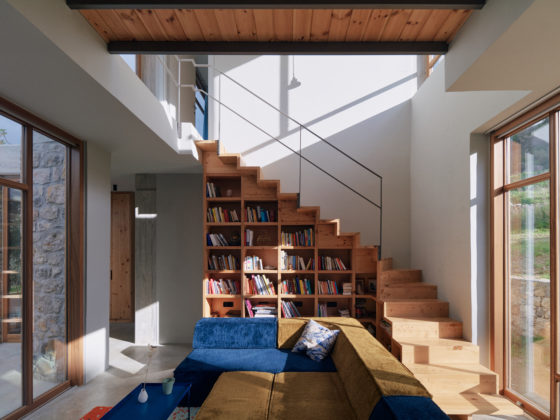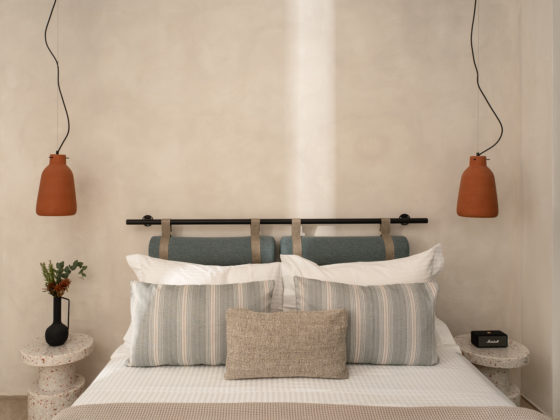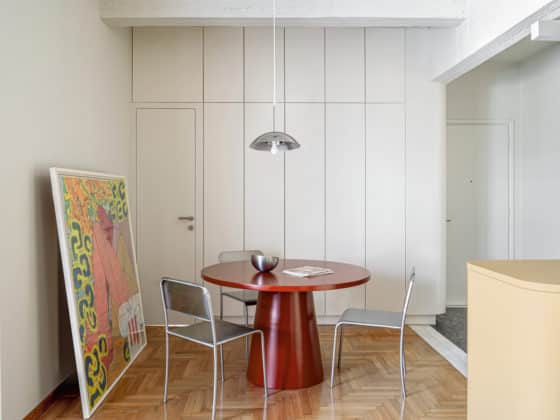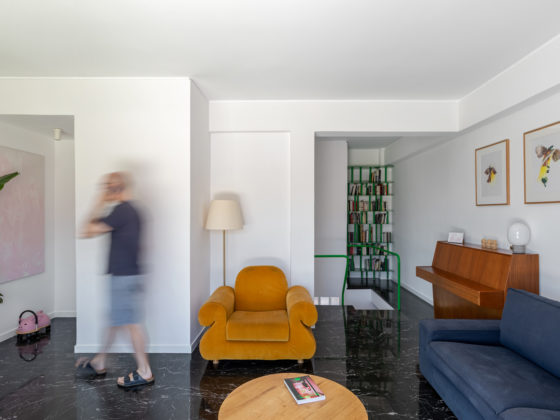The renovated visitor center of the Robola Wine Producers Cooperative, in Kefalonia island, was designed by architect Afroditi Lefkaditi as a way of acquaintance with its singular location, through wine tasting. The driving concept in the redesign was perpetual contact with nature and incorporation of the local landmarks.
The Cooperative facilities are located in the Omala plateau in the middle of the island, right in front of St. Gerasimos monastery. In-between, a vast vineyard facilitates the connection with the local wine culture. The architecture of the renovated visitor center highlights the long history of the cooperative, introducing innovative elements that bring the experience of Robola tasting into a new era.
The compound comprises of two parallel wings, joined at the edge with an ample new pergola. This configuration embraces a courtyard that does not feel like a hermetic enclosure; instead, the courtyard maintains visual connections to the vineyard, the monastery, and the surrounding mountains.
The image of the renovated complex is informed by the architectural features of the monastery: its side facing the courtyard is marked by an arched gallery space under a pitched, tiled roof, facilitating the transition between the interior and the open air. Such formal features, however, are rendered in an abstract manner, with large surfaces, provided that the objective was not towards a picturesque reproduction of monastic architecture but rather, the introduction of a contemporary local character, desired by the cooperative.
The off-green color gracing the walls is consistent with the color of the vineyard soil, while the arches and smaller, rectangular openings, are outlined with modern, slender black metal frames.
The interior of the renovated wing accommodates a feature cellar and shop, a bar, and a flexible space bordering the vineyard. The cellar features evocative lighting, under a barrel vault ceiling. Its sides are flanked by open, slender black metal shelves with concealed lighting, showcasing the bottled wines of the producers belonging to the cooperative. In the bar, solid black metal surfaces provide a strong visual anchor to the floor, while the surface of the wall behind is covered in rhythmically alternating wooden and metal screens, the former featuring a dynamic, irregular geometry and the latter being restrained to a simple, rectangular grid. The space adjacent to the vineyard is bright and can accommodate large gatherings and seminars that can easily extend to the courtyard and shaded pergola space.
The seamless connection between the indoor and outdoor space is enhanced by wide, openings flanking the gallery, with extensive glazing interrupted by slender black metal frames. At the far edge of the wing, bordering the vineyard, a new, oversize rectangular opening frames the view to the monastery, over the field, emulating the same idea dominating the space of the pergola right outside.
The renovated visitor center, through carefully considered architectural decisions, showcases the long history of the cooperative and marks its passage to a new era, relying on the remodelling of its own, local features in a consistent, contemporary expression. Ultimately, the designed walks and framed views stage a narrative underlining the singular traits of the place, enriching the visitors experience of the island, its culture and wine-producing tradition.
